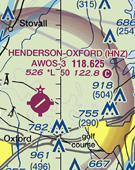Airmanship
Lately, I have attended some FAAST team safety meetings both here and in other states. It appears the accident rates for student and private pilots are ever so common in two areas of operation. One is the Balked Landing (go around) procedure where you elect not to land, but abort for various reasons. Good choice if you’re a thinking pilot. Remember that no two landings are ever the same in the pattern within a 3 minute window, unless it is “dead calm.”
The other area of concern is the crosswind landing. Two many bent props and stalls are occurring with the bad, bounce and force it down XW stigma. Stalls are occurring during the aborted landing because of poor rudder, elevator control and flap retraction. In fact, stalls are the culprit in both situations. For example: You are presented upon arrival at the airport with a 10mph, gusting to 15 mph crosswind. Gusts are to 15 mph. In the flare your drift off of centerline and do not lower the upwind wing with opposite rudder. You then panic, lower the nose and force it down with full flaps. You touch the nose wheel sharply, BOUNCE and with Newton’s third law being alive and well, become airborne with the nose more than slightly above lets say the horizon than it should be for the landing. You have the plane improperly trimmed nose low, the aircraft stalls lets say at 10′ above the runway and again and with that your nose wheel hits firmly, so firmly that you have a prop strike. During the bounce you could have simply leveled the nose, added a touch of power and readjusted your attitude to a proper flare slightly nose high attitude. Or you could have added full power, aborted and retracted the flaps a little at a time. Remember to apply proper rudder and elevator pressure with the application of power. Also go to the Flight Training handbook or your literature and review “bounce landing recovery.” So now you have a blemish on your record and probably an invoice for repairs which could be 5-6k. Ouccchhh!!! Why because of not having proper Crosswind correction and maybe too much flap being applied on the approach. Remember that using flaps slow you down, but also get you closer to a stall earlier because of a Flower Flap (Cessna) changing the angle of attack ever so slightly. It is recommended that you should MAYBE use less flaps and increase your approach speed to half the gust factor which in turn will give you more rudder and down force on the elevators. This allows more control input and correction.
In the Balk Landing sequence releasing all the flaps in one motion will make the airplane sink like your in an elevator going from floor 10 to 5 in a few “blinks of the eye.” Never release all the flaps at once except during the preflight/run-up checks. You lose too much lift on retraction, and possibly can get into the flight regime “area of reverse command.” The FAA is getting too many incident reports it appears in these two areas of landing. The landing phase accounts for more than 80% of the aircraft incidents and accidents. Understanding flaps, aerodynamics, the slow flight regime, and feeling the sink of an aircraft is so important in good flying technique. “Takeoffs are optional, landings are mandatory.” Learn how to do them well in all scenarios that one may encounter.


